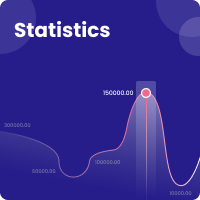Using mind mapping as a method to help ESL/EFL students connect vocabulary and concepts in different contexts
Abstract
Current knowledge about the ways in which the brain works shows that thinking is not linear. Individuals can better understand concepts when they have visual representations of those ideas. These pictorial diagrams are manifestations of Radiant Thinking. Understanding how the mind works to connect concepts, helps educators provide vocabulary strategies that support students’ learning. Mind Mapping has proven to be a good technique for memorizing, creative thinking, and learning. This paper reflects on how mind mapping helps ESL/EFL students connect concepts in different contexts through the assistance of pictorial representations by hand and by the use of software that enables learners to create associations between words and images in order to better learn and memorize information in a second language.References
Andrews, G., Halford, G. S., Bunch, K. M., Bowden, D., & Jones T. (2003). Theory of mind relational complexity. Child Development, 74(5), 1476-1499. Retrieved from http://www.jstor.org/stable/3696189.
Brown, T. S., & Perry, F. L. (1991). A comparison of three learning strategies for ESL vocabulary acquisition.TESOL Quarterly, 25(4), 655-670. Retrieved from http://www.jstor.org/stable/3587081.
Budd, J. W. (2004). Mind maps as classroom exercises. The Journal of Economic Education, 35(1), 35-46. Retrieved from http://www.jstor.org/stable/30042572.
Buzan, T. (1993). The mind map book. New York, NY: Penguin Books Ltd Buzan, T. (2010-2012). IMindMap6 [Computer software]. Available from http://www.thinkbuzan.com/us
Canning-Wilson, C. (1999, June). Using pictures in EFL and ESL classrooms. Current Trends in English Language Testing Conference. Retrieved from ERIC library database (ED445526).
Crawford, M. (2005). Adding variety to word recognition exercises. English Teaching Forum, 43(2), 36-41.
Graves, M. (2006). The vocabulary book. Learning & instruction. New York, NY: Teachers College Press.
Hardcastle, V. G., & Stewart C. M. (2002). What do brain data really show? Philosophy of Science, 69(S3), S72-S82. Retrieved from http://www.jstor.org/stable/3696189
Hayes, D. P., Wolfer, L. T. & Wolfe, M. F. (1996). Teaching and learning vocabulary, perspectives and persistent issues. In Hiebert, E. H. & Kamil, M. L. (Ed.), Teaching and Learning Vocabulary: Bringing Research to Practice. Mahwah, New Jersey: Lawrence Erlbaum Associates, Inc.
Helfgott, D., & Westhaver, M. (2012). Inspiration [Computer software]. Available from http://www.inspiration.com/Inspiration, http://www.inspiration.com/lessonplans
Herrera, S., & Murry, K. (2005). Mastering ESL and bilingual methods: Differentiated instruction for culturally and linguistically diverse (CLD) students. 2nd ed. Boston, MA: Pearson.
Hiebert, E. H., & Kamil, M. L. (2006). Teaching and learning vocabulary: Bringing research to practice. Mahwah, New Jersey: Lawrence Erlbaum Associates, Inc.
Hofland, C. (2007). Mind-mapping in the EFL classroom. Fontys Teacher Training College Sittard. Retrieved from http://hbokennisbank.uvt.nl/cgi/fontys/show.cgi?fid=4166.
King, G. (2007a). Teacher’s guide to mind mapping. Brisbane, New Zealand. Gideon King Nova Mind Software.
King, G. (2007b). NovaMind5 [Computer software]. Available from www.novamind.com.http://www.novamind.com/connect/nm_documents/show_branch/Power/6E4A71D22AF4-45D3-956B-3B7E914557ED/1550717568
King, G. (2011). Understanding Mindmap Software – What is Mind Mapping? Retrieved from http://www.novamind.com/mindmapping-software/
Lawson, M. J., & Hogben, D. (1996). The vocabulary-learning strategies of foreign language students. Language Learning, 46(1), 101-135. ISSN 0023-8333
Naykki, P., & Jarvela, S. (2008). How pictorial knowledge representations mediate collaborative knowledge construction in groups. Journal of Research on Technology in Education, 40(3), 359–387. Retrieved from http://www.eric.ed.gov/contentdelivery/servlet/ERICServlet?accno=EJ826082
Pariser, E. (2011). The Filter Bubble. New York, NY. The Penguin Press. Romanelli, F., Bird, E., & Ryan, M. (2009). Learning styles: A review of theory, application, and best practices. American Journal of Pharmaceutical Education, 73(1), 1-9. Retrieved from http://search.proquest.com/docview/211227342?accountid=11207
Schindler, A. (2006). Channeling children’s energy through vocabulary activities. English Teaching Forum, 2, 8-12. Retrieved from http://exchanges.state.gov/englishteaching/forum/archives/docs/06-44-2-c.pdf
Seyihoglu, A., & Kartal, A. (2010). The views of the teachers about the mind mapping technique in the elementary life science and social studies lessons based on the constructivist method. Educational Sciences: Theory & Practice, 10(3), 1637-1656. Retrieved from http://www.eric.ed.gov/contentdelivery/servlet/ERICServlet?accno=EJ919863










